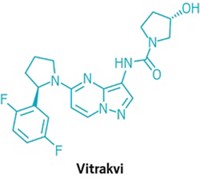Advertisement
Grab your lab coat. Let's get started
Welcome!
Welcome!
Create an account below to get 6 C&EN articles per month, receive newsletters and more - all free.
It seems this is your first time logging in online. Please enter the following information to continue.
As an ACS member you automatically get access to this site. All we need is few more details to create your reading experience.
Not you? Sign in with a different account.
Not you? Sign in with a different account.
ERROR 1
ERROR 1
ERROR 2
ERROR 2
ERROR 2
ERROR 2
ERROR 2
Password and Confirm password must match.
If you have an ACS member number, please enter it here so we can link this account to your membership. (optional)
ERROR 2
ACS values your privacy. By submitting your information, you are gaining access to C&EN and subscribing to our weekly newsletter. We use the information you provide to make your reading experience better, and we will never sell your data to third party members.
Business
Cancer Drugs Were Most Sought After In 2015
Immuno-Oncology: Driven by data, deal-making was hot last year
by Lisa M. Jarvis
December 7, 2015
| A version of this story appeared in
Volume 93, Issue 48

Excitement over immuno-oncology treatments reached manic levels in 2015. As more data emerged to support the notion that harnessing the immune system is an effective way to battle cancer, companies jockeyed for assets to add to their portfolios. Each month seemed to bring another sizable deal, company launch, or notable clinical development.
One of the year’s most important developments came in May during the American Society of Clinical Oncology’s annual meeting. Amid a crowded auditorium in Chicago, Memorial Sloan Kettering Cancer Center oncologist Jedd Wolchok showed that combining Bristol-Myers Squibb’s CTLA4 inhibitor Yervoy and its PD-1 inhibitor Opdivo was more effective in treating metastatic melanoma than using either therapy alone.
That result underscores a key theme in cancer immunotherapy, says Paul D. Rennert, head of the consulting firm SugarCone Biotech. The large trial provided the first substantial evidence that, as researchers suspected, cancer immunotherapies work best with partners.
And the best partners will be “checkpoint inhibitors,” antibodies that take the brakes off the immune system. “If there’s going to be combinations, the PD-1 inhibitors will be the backbone of the combination—it’ll be a PD-1 inhibitor plus something else,” says Colin White, an analyst at Datamonitor Healthcare. “What’s not well understood at this time is what that ‘something else’ will be.”
To that end, companies spent the year broadening their portfolios to ensure they had access to a backbone therapy plus complementary molecules.
Sanofi, for example, committed $1.8 billion to an immuno-oncology pact with Regeneron through which it gained both a PD-1 inhibitor and antibodies against several other immune checkpoint targets. Celgene shelled out $450 million to participate in development of AstraZeneca’s PD-L1 inhibitor MEDI4736.
Other prominent deals include Bristol-Myers Squibb’s $1.25 billion buyout of Flexus Biosciences, a biotech firm with small molecules that block IDO, an enzyme that helps cancer cells evade immune surveillance.
But even as companies compete for the best agents to combine, researchers acknowledge a steep learning curve in figuring out how to pair them safely. The Yervoy-Opdivo combination carried side effects that were severe enough for more than one-third of patients in that arm of the trial to discontinue treatment.
And Yervoy and Opdivo are expensive. Although the list price of $256,000 per year for the combination therapy, which the Food & Drug Administration approved in October, is lower than the sum of the individual drugs, the question of how much immunotherapies should cost became more acute this year.
Cost became a flash point for another set of attention-grabbing immuno-oncology agents: cellular therapies. Chimeric antigen receptor T-cell (CART) therapies, made by reengineering a patient’s own T cells to seek and destroy cancer cells, have elicited remarkable responses in some types of blood cancers and prompted another batch of partnerships.
But because they are individualized, CARTs, if approved, are expected to be extremely expensive. Companies, insurers, and other stakeholders are already contemplating new mechanisms to pay for them.




Join the conversation
Contact the reporter
Submit a Letter to the Editor for publication
Engage with us on Twitter